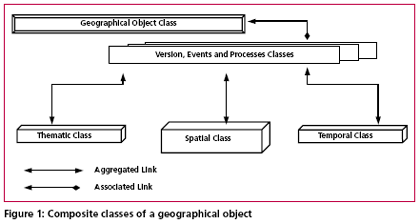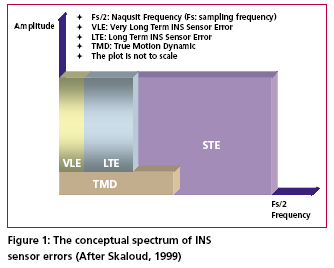
Despite the rapid advances in software and hardware technologies, the development of temporal databases capable of dealing with the evolution of geographical entities remains a challenging task. The aim of this paper is to discuss a proposed model that is able to handle spatial entities over time as a continuum.

According to Skaloud [1999], the inertial sensor errors are composed of long term errors (low frequency components) and short term errors (high frequency components). Therefore, a conceptual plot of the frequency spectrum of the inertial sensor errors in the measurements can be illustrated as in Figure (1).
German government makes funds available for Galileo development work
The German federal government will provide funds to the tune of 2.5 million Euros for research and development work in Rostock on the European satellitebased navigation system Galileo.
In the course of a visit to the Rostockbased technology company RST, Wolfgang Tiefensee, the Federal Minister responsible for promoting the industries of the eastern federal states that used to make up the German Democratic Republic, said that the groundwork R&D in the field of aerospace technology carried out by companies in Mecklenburg West-Pomerania was of an outstanding quality. Substantial funds would now be invested in Galileo application research, he added.
Within the context of research undertaken by RST, four transmitters will be set up in the port of Rostock capable of giving off Galileo signals. During the test phase the signals, which allow the receiver to pinpoint the position of the sender exactly, will be picked up by a ship of the ferry line Scandlines. www.heise.de

Arirang 2 sends first photographs
A multipurpose satellite that South Korea launched into space in July, has sent back its first photographs, proving that the images provided by Arirang 2 are vivid enough to distinguish small objects on the ground. The Ministry of Science and Technology and the Korea Aerospace Research Institute (KARI) unveiled the images from the high-resolution cameras of Arirang 2.
http://english.hani.co.kr

China ‘tightens’ control over foreign surveying, mapping…
China will step up supervision of foreigners who conduct surveys and map areas of the country. Foreign organizations and individuals, who engage in surveying and mapping in scientific research and teaching programs, travel or exploration, must obtain approval from the government and accept supervision, the State Bureau of Survey and Mapping said.
The bureau notice said that foreigners who illegally survey, gather and publish geographical information on China will be severely punished. Chinese partners or translators will be fined if they fail to stop illegal mapping activities as soon as they find out about them. http://english.people.com.cn

Glonass full deployment by 2010
Russia’s 24-satellite navigational and GPS, Glonass, will be fully deployed by 2010 as per Russia’s Defense Ministry. The ministry’s press office said the development and use of Glonass was discussed in Moscow at a meeting between Deputy Prime Minister and Defense Minister Sergei Ivanov and members of a government military commission. Also discussed were ways to improve the competitiveness of navigational services, the mass production of navigational equipment for consumers, as well as legal issues. http://en.rian.ru

Siemens wireless modules XT75 and XT65
In December 2006, the Siemens Communications Group, Munich will bring to market two new modules for tracking and navigation applications: the XT75 and the XT65. Both modules contain a GPS receiver that allows global positioning, and EDGE or GPRS technology for transmitting data to a mobile device. The modules are based on JavaT and have quadband capability, which means they can be used in all GSM mobile networks worldwide.
www.siemens.com













 (5.00 out of 5)
(5.00 out of 5)